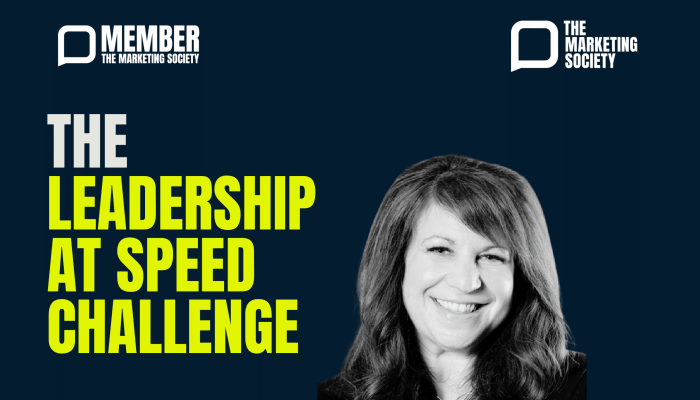Manjiry Tamhane, WW CEO of Gain Theory, judged the Creative Data Lions recently at the Cannes Lions Advertising Festival. Inspired by what she’s seen, she considers how data and technology have changed the way people interact with advertising, and how some of the most creative and effective advertising campaigns of the last decade have only been possible because of the data available to marketers.
I’ve read several articles recently suggesting that there is still a reluctance among some creatives to accept the idea that data has a role to play in influencing their work. I find this surprising as I don’t believe there is a campaign launched today, be it brand led or direct response, that isn’t directly or indirectly influenced in some way by insight or data.
This year’s Creative Data Lions entries are testament to this. One of the most decorated in this year’s awards is the JWT campaign “The Next Rembrandt”. This work is a fabulous illustration fusing data and creativity to produce an incredible creative piece of work that simply wouldn’t have been possible previously. The campaign used data from 346 real Rembrandt paintings, digitising every aspect to recreate a “new” Rembrandt masterpiece. The result in itself is a beautiful piece of artwork but there was a commercial objective behind the campaign too, promoting investment bank ING’s long association with art and innovation. A job well done I’d say.
Data has been helping to shape marketing campaigns and advertising concepts for decades. Even in the 1950’s, consumer data and insight on the increasingly cash rich, time poor US population led marketers to push the labour saving automation of kitchen and laundry appliances.
Several decades later, Dove, who in 2004 were looking to build brand love and loyalty, launched the Dove Real Beauty campaign based on the findings of a major global study. The initial survey highlighted that only 2% of women consider themselves beautiful. This statistic in itself was the catalyst for a long running campaign strategy that would go on to win all top 5 Campaigns of the Century by AdAge.
The volume, depth and speed of data availability, together with the advent of mobile and digital is placing ever growing demands on our attention. This has made the ability for data to influence creativity difficult but absolutely necessary. So, the debate isn’t really about whether data should inform the creative process, because it does, but rather is it being done in the right way, all of the time? I believe that many marketers pay lip service to data, at their peril.
Let’s look at retargeting as an example. Through attribution modelling, it’s possible to look at event level data and see which publisher, platform, placement, creative execution or tactic is working the best. Combined with behavioural and contextual insight, it is possible to target someone who has behaved in a certain way or is in the right place at the right time. This can be a very effective method of encouraging someone to move through the funnel and into the purchase phase. However, many advertisers are not fully closing the loop, continuing to target a consumer after they have made a purchase. This can of course be frustrating for the consumer and jeopardise positive brand perception.
It’s no surprise that brands mis-target people. We leave crumbs of data wherever we go, whether it’s our location, the sites we’ve visited or the pages we viewed. But they are just crumbs, not a complete picture. So digital campaigns are serving ads not to an individual but instead towards an audience based on a patchy picture of characteristics and behaviours. It’s important to think through the process and determine the risks of alienating your intended consumer before embarking on a retargeting campaign.
On a positive note, when advertisers cleverly take advantage of data, the impact can be highly effective. A great example is the campaign by US motel chain, Red Roof Inns. In the midst of the harshest winter in decades, the brand identified that between 2 and 3 percent of U.S. flights were being cancelled every day. With properties near some of the busiest airports in the country, Red Roof was in prime position to capitalize on travellers’ misfortunes. The brand leveraged proprietary technology to aggregate flight cancellation information in real time and used it to specifically target travellers with cancelled flights, via a mobile search campaign, at the moment they were seeking accommodation for the night.
For truly effective campaigns, data must act as the spark that ignites the creative execution which in turn captures the consumers’ imagination. Essentially, it’s about ensuring that you understand your customers incredibly well, in terms of their demographics, behaviours, attitudes and needs, coupled with clever ways of leveraging the data in an engaging and eye catching way. Most importantly, it needs to be truly personal and not just targeted.
A great example of this, winning a Silver Lion in Creative Data, was Vacation Matchmaker from VML. The campaign served real-time targeted and personalised pre-roll videos with a vacation theme. The messages were changed in real-time based on data from online behaviours, likes and interests with over 2,000 video combinations. The advent of innovations such as the ‘The Next Rembrandt’ and Jukedeck’s AI music composer brings the possibility of real-time targeted and personalised creatives even closer.
When it comes to creating successful data-driven campaigns, there are some important considerations:
- Identify and agree your objective: be it brand health, short term sales, cross selling to another product or creating long term customer value, be sure you have consensus within your business on your objective
- Ensure you can access the right data: Is the data accessible, does it exist? Do you have the infrastructure in place to capture it and will you be able to create value from the data generated
- Be ready to respond to new insights: If you are going to invest in data analysis before launching your campaign, consider how you are going to use the results. Align your partners, agencies, sales channels, call centres and be ready to activate recommendations quickly
- Analyse and optimise throughout the campaign lifestyle: Once you’ve executed the campaign, don’t wait until the end to do analysis. Start auditing within campaign and optimise throughout the campaign life cycle. Put yourself in a position where you can deploy tactical optimisation
- Build in flexibility. Don’t spend all your money before the campaign. Have a contingency fund so that if something is working really well you can push it a bit further. Don’t lock yourself too heavily into one medium or channel as you won’t be change course if required
There is no doubt in my mind that the availability of customer data and the rapid advancements in technology are fuelling creative ideas that have already changed the way consumers are interacting with brands. I’m very excited to have judged some of the world’s best examples of creativity fused with data and technology at this year’s Cannes Lion Innovation Festival. Long may this fusion of different approaches continue.



